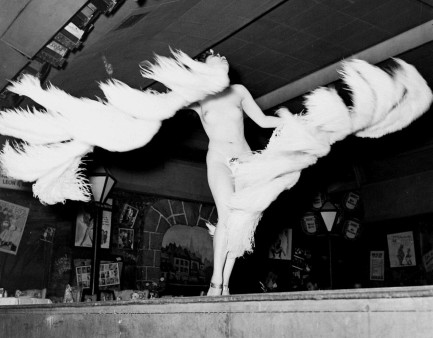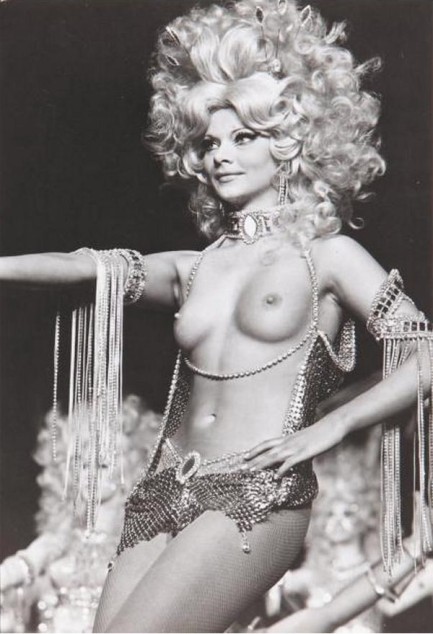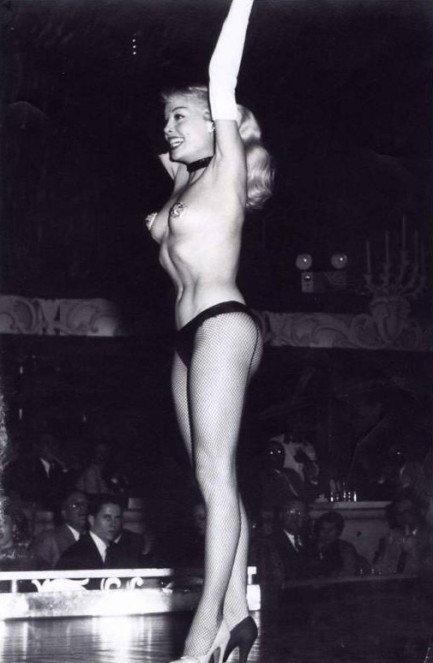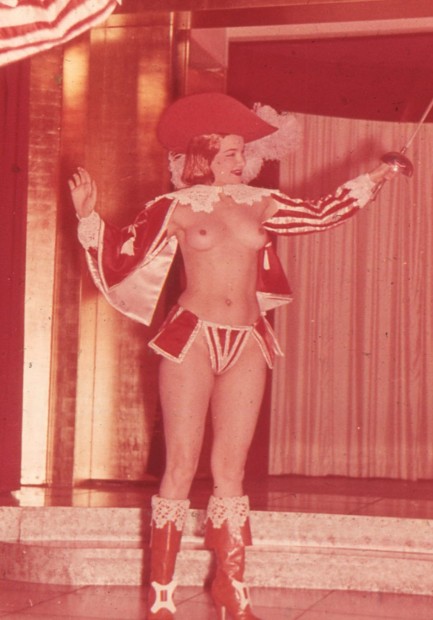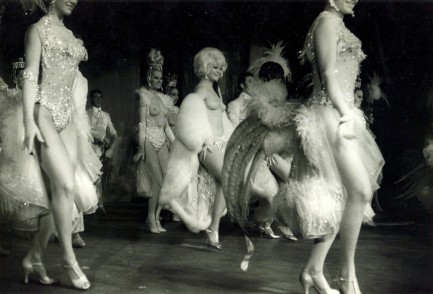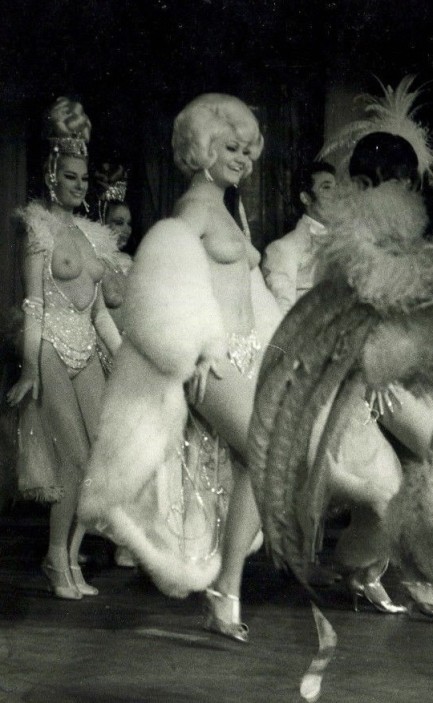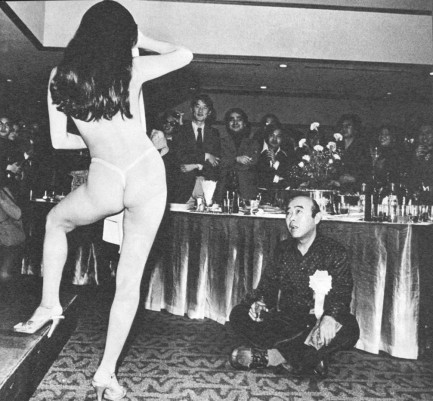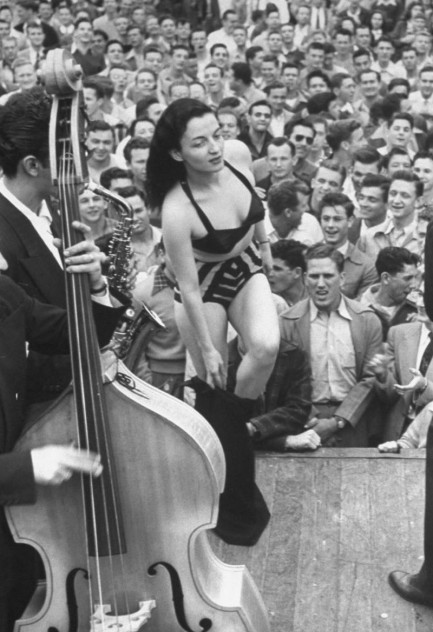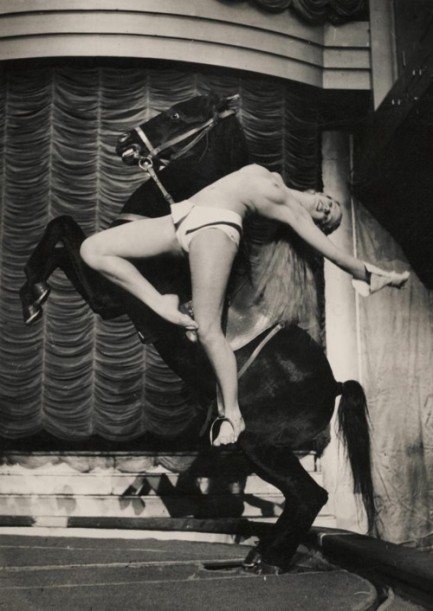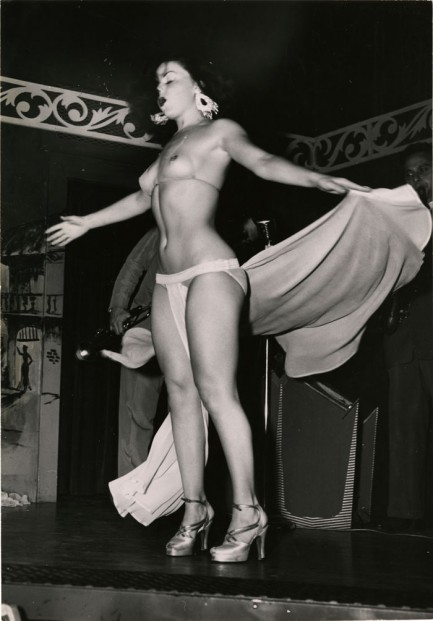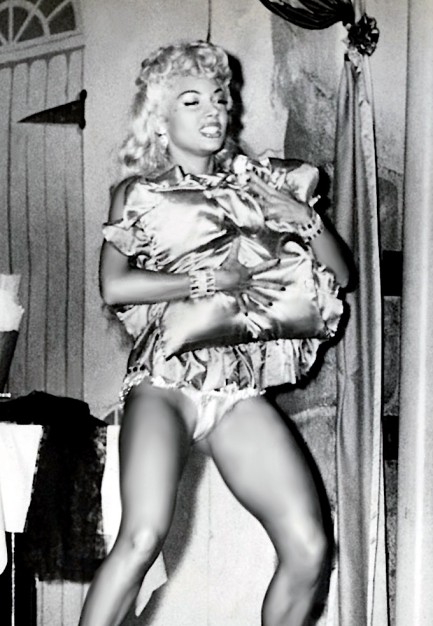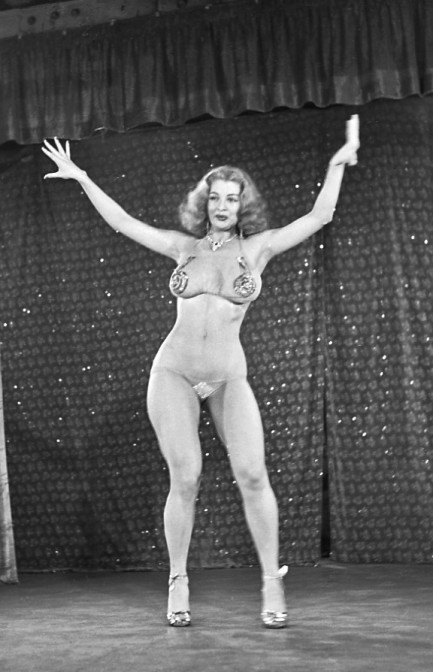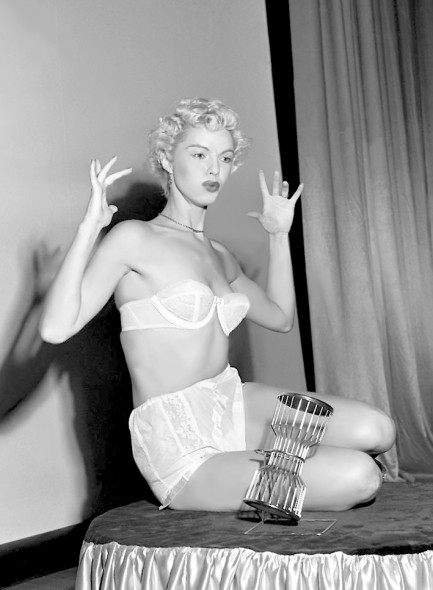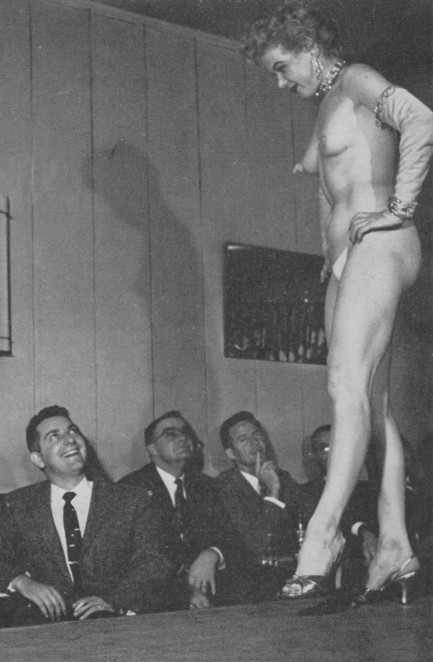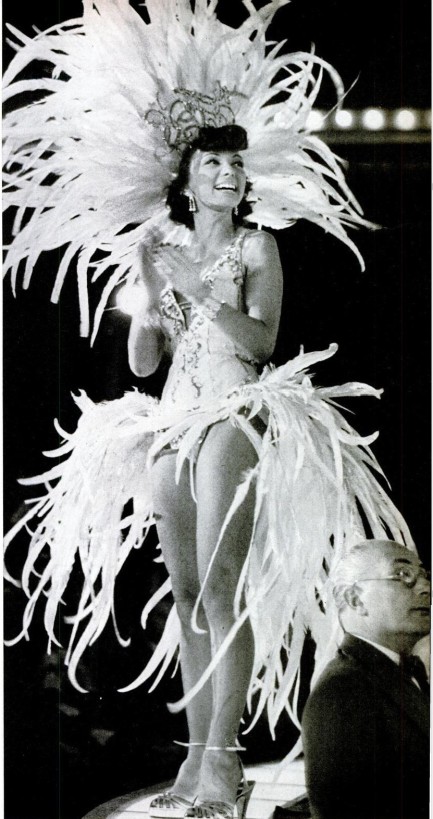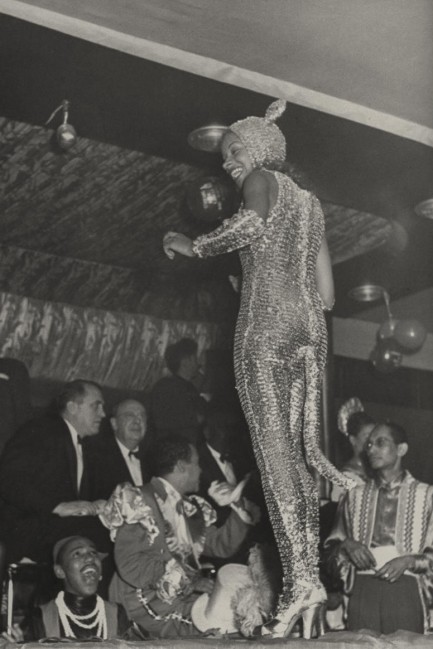 The anatomy and the ecstasy.  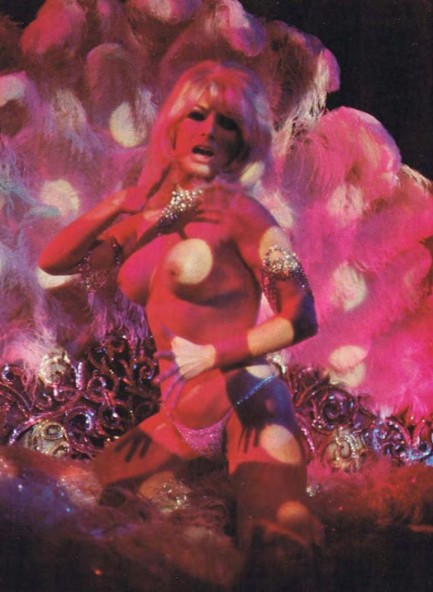
We have a tremendous amount of material on burlesque in Pulp Intl., yet it's been eight years since we put together a full collection of mid-century burlesque dancers, go-go girls, and strippers. That day has arrived again. Above and below you see some of the better shots we've run across of late, featuring the famous and the obscure, the restrained and the explicit, the domestic and the foreign, and the blonde, red, brown, and brunette. Where possible we've identified the performer, such as above—that's Carol Ryva, sometimes known as Carol Riva, Carole von Ryva, Cara Rive, et al, a French dancer who rose to fame during the early 1960s. Other familiar faces you'll see are Lilly Christine, Maria Tuxedo, Gay Dawn, Yvonne Ménard, and Virginia Bell. Occasionally, when we post something that contains nudity, we feel, in this age of new puritanism that we should comment about it. We saw a survey recently indicating that a large percentage of Gen Z'ers think nudity in movies is unnecessary in all circumstances, especially sex scenes. And we're like, really? The wonderful thing that virtually every person does, or which practically everyone wants to do, and which is how nearly all of us came to be here on the planet, is somehow taboo, but the horrible thing that virtually none of us do—kill—must be part of nearly every film, book, and television show? Programming works. If you sell sexual shame unceasingly new generations will absorb it, and believe they've come to their views organically.
The reality is that sex and nudity are freeing. Burlesque and erotic dance are valuable because they take our DNA driven sexual desire and package it as an art form, fit for public consumption and contemplation. Moving one's body rhythmically feels good, and watching those who work so very hard but make look so easy the pushing of their physical limits within the realm of such expression is pleasing to the eye and psyche. That's why we love erotic dance. Our two previous burlesque collections, “Infinite Jest,” and “Dancers Gotta Dance,” are here and here, and we have some notable smaller burlesque forays here, here, and here. But if you want to kill some time for real, instead click the keyword “burlesque” at bottom, then scroll, scroll, scroll. Make sure you pack a lunch. Virginia Bell
Lee Sharon.
Dixie Brandy.
A group shot from the legendary Crazy Horse, Paris.
The incomparable Lilly Christine. We also have a set of photos from one of her performances here, and more links from that point.
 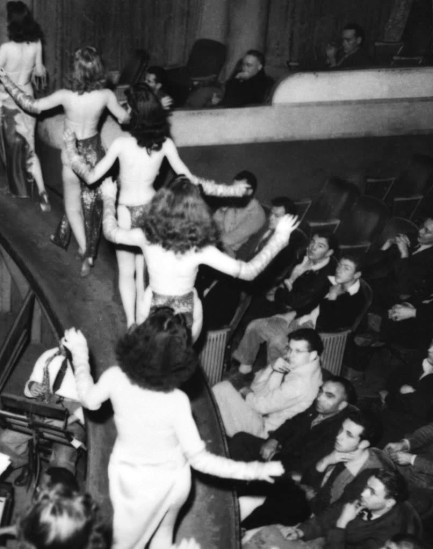
The Follies Theater at 337 S. Main Street, Los Angeles, 1946.
Tempest Storm.
Gay Dawn.
Yvonne Ménard, and more photos here.
Carol Jane, aka Spider Woman.
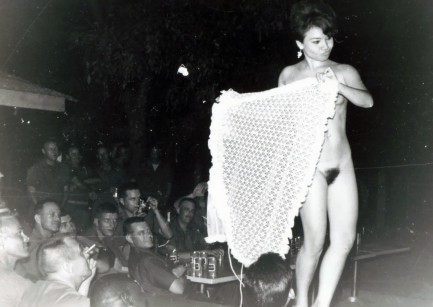 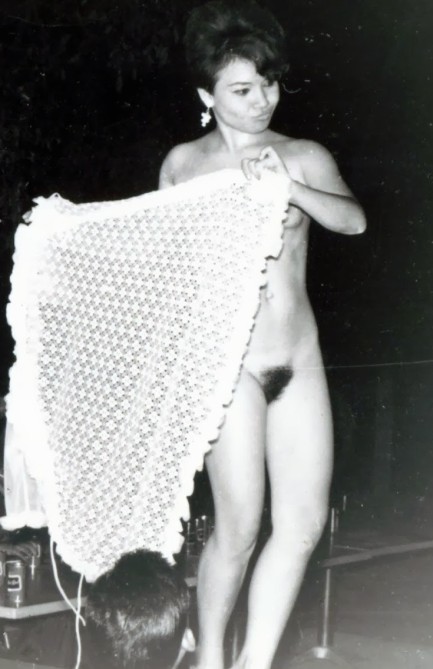 Jackie Miller.
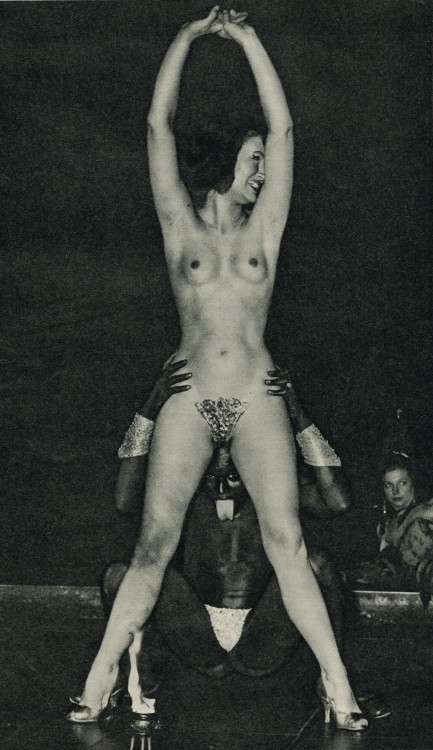 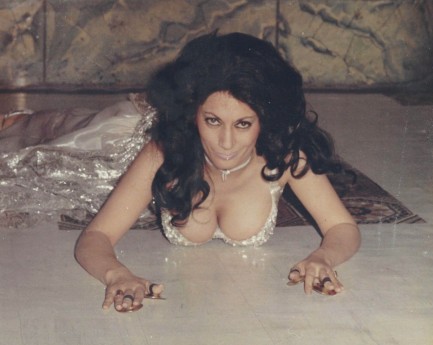  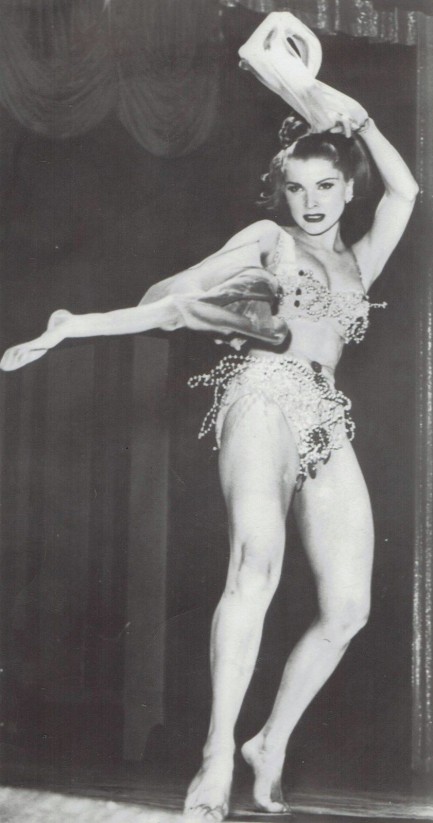 Debra Paget, who performed one of the most provocative screen dances ever in 1959's De indische grabmal. Debra Paget, who performed one of the most provocative screen dances ever in 1959's De indische grabmal.
 Blaze Starr. We also saw her recently here. Blaze Starr. We also saw her recently here.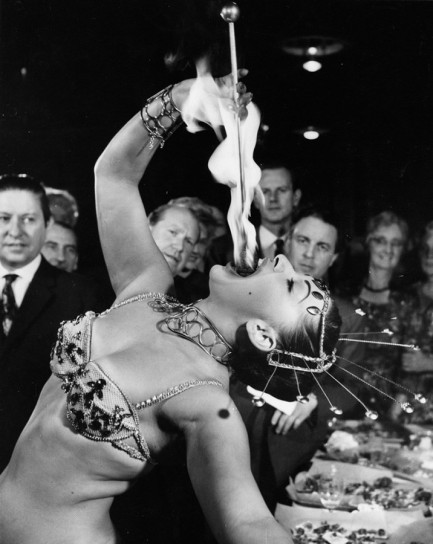  
 And she didn't even need a password to do it. 
Japanese actress Noriko Yamamoto was a minor player onscreen, but she's a major player on this log in a photo published in a 1980 issue of Heibon Punch. It's a nice image, part of an essay shot in Alaska, of all places. Here's what she said about it (so claimed the editors): “The clock is pointing to 11 PM, but the red sun is bright and beautiful. Anxiety crossed my mind as to whether I would be able to survive in this great outdoors. Fishing with a lure for the first time after setting up the tent. And the feeling of a king salmon coming into my hand. A river as wide as a lake. I don't know when bears will come out, making my heart flutter.” Despite her fears she survived, there were no bears, and most importantly she suffered no splinters. Bonus: she got to hold a humungous fish.

 Nice for the camera but very hard on the circulation. 
Every time Miki Sugimoto stars in a promo photo we can barely believe our eyes. Here the cult action actress is squeezing her frame—or part of it anyway—into a tight space to get this wonderful shot. Wonderful for who? Certainly not her. She played some difficult roles, but this may have been her hardest. By the time she finished riding the rails for this image we bet she felt like her bottom was full of novocaine. Sometimes, though, you have to go above and beyond in the pursuit of art. Click her keywords below to see amazing promo shots and movie posters.
 Get outta the frickin' way you lunatic! Are you out of your goddamned— Oh. I mean... need a lift? 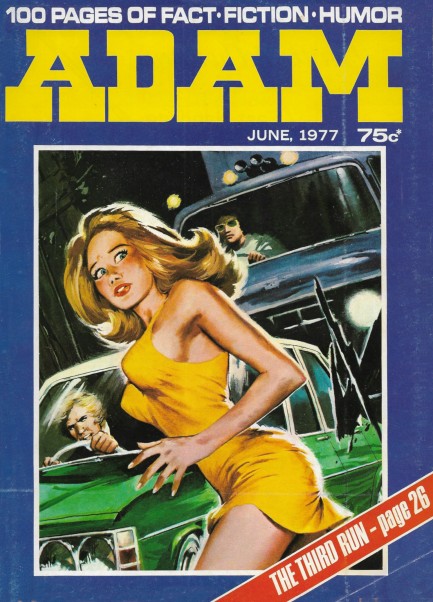
We're going back-to-back with Adam magazine. We posted one yesterday, but we have another because, despite the fact that this is the eighty-sixth issue we're sharing, we have a stack yay high we still need to get to. At this point we'll make the claim—without any proof whatsoever, but hey, that just means we're in step with the times—that we have more copies of Adam under our roof than any other place in the world. Prove us wrong. It's all the more impressive considering we don't live in Australia, where the magazine originates, and have needed to ship them wherever we were living at the time, currently (and permanently?) Spain.
Today's issue from this month in 1977 has the slightly more streamlined look the magazine moved toward as it approached its mid-1978 dissolution. The cover illustrates Jay Ruth's story “The Third Run.” We were eager to learn why the femme fatale crossed the road. It wasn't to get to the other side. She was trying to keep from being flattened, and not in the road as we assumed, but in a warehouse. In the story, she's part of a truck hijacking ring, and to her misfortune, she chooses as her newest victim an undercover operative posing as a truck driver. He'd been out there hoping to lure the hijackers, and on his third run he did. It's a pretty good story.
It wouldn't be an issue of Adam without models, and you get plenty here. By 1977 it was go full frontal to survive in the men's mag market or quit, and Adam quit—though resisting the shift to porn was probably only one of many considerations (moving to color and glossy page stock were probably others) However, though Adam never went all the way, one of the models wearing a bikini shows a bit of overflow bush and a treasure trail. Many times with later issues of Adam we're able to identify a model or two, but all the ones here are unknown to us. We're especially intrigued by the woman on the title page, with her short-shorts, superhero boots, and spectacular hair. Seems like, given the crucial masthead position, we should know who she is, but no such luck.
As a side note, we got an e-mail about our scans recently, another request for larger dimensions. We don't have the capability to do that easily, do to our website's design. We did offer a large scan once, a while back, for something special, but it was one image, not dozens. We couldn't even begin to do it for multiple images. Really, we're glad it's beyond the realm of practicality to change our scan sizes—for reasons already stated. But hey, at least we have a lot of them. Forty-plus panels worth, below. Please enjoy. Edit: the mystery woman is Minah Bird, a Nigerian born model and bit-part actress, whose onscreen credits include The Stud, Old Dracula and Four Dimensions of Greta.
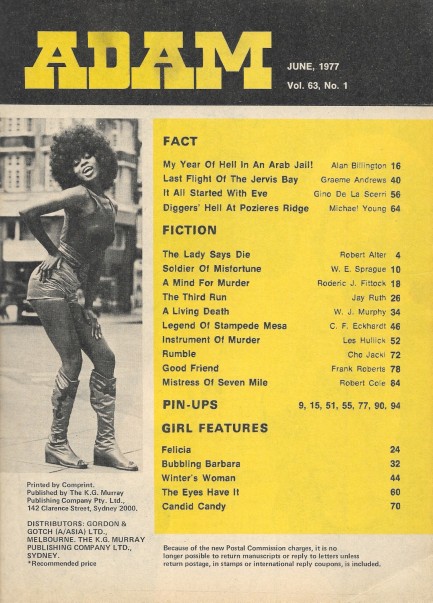 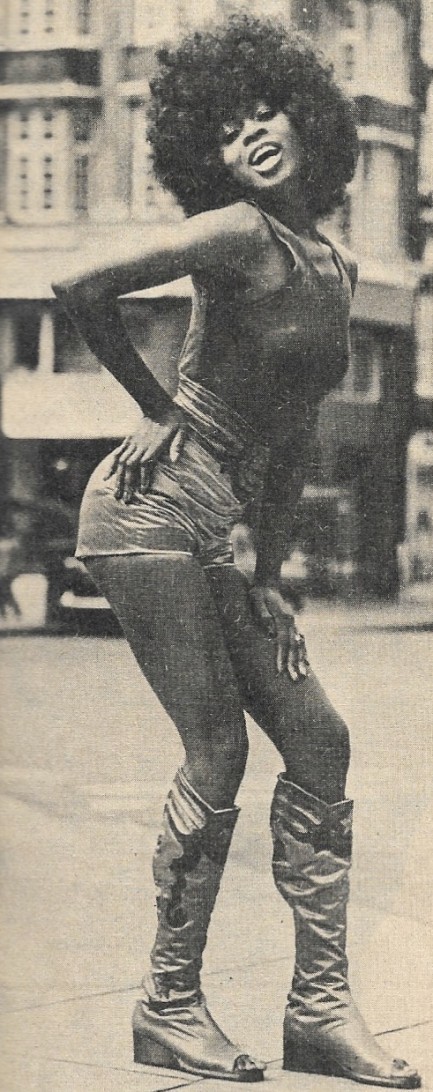  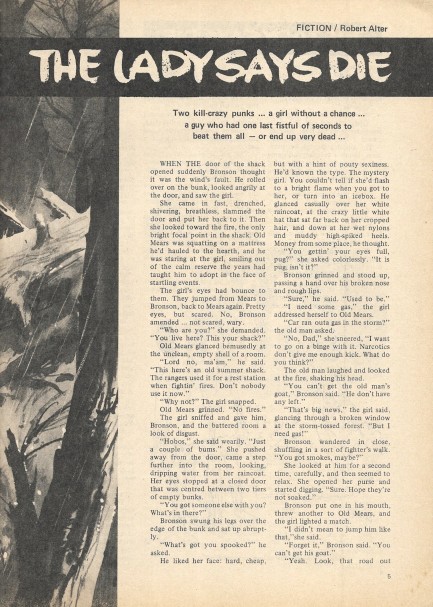 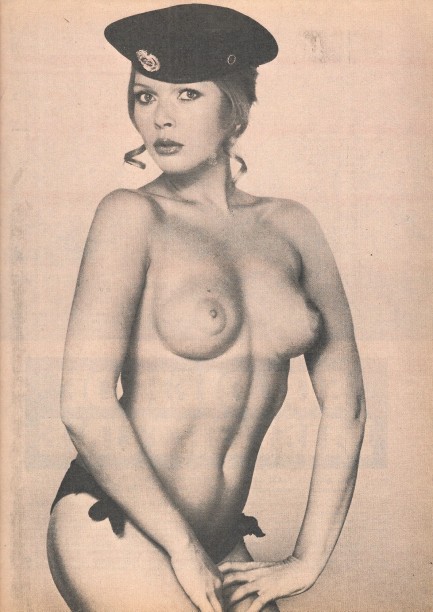  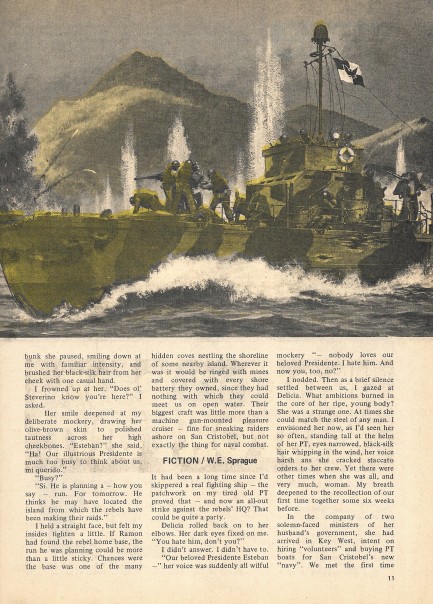  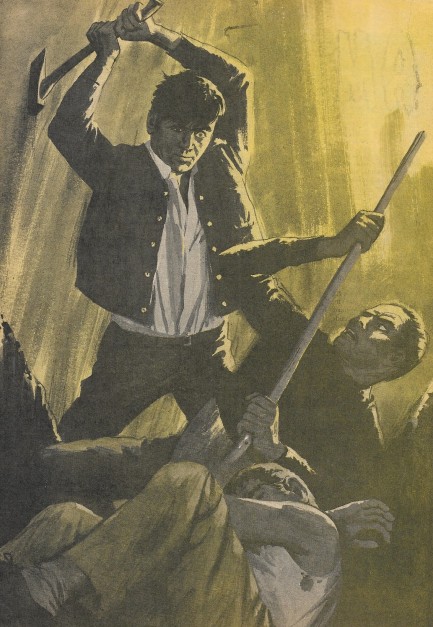 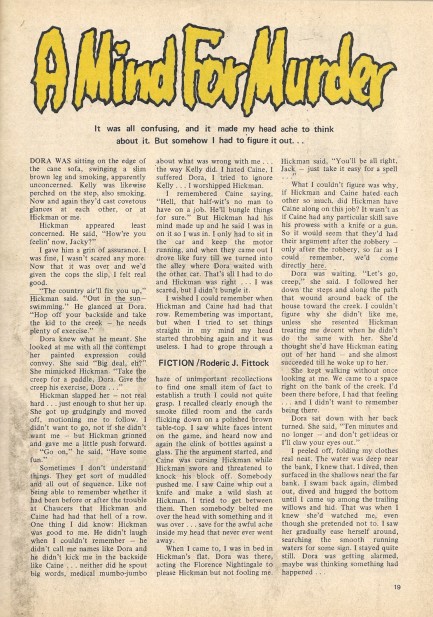 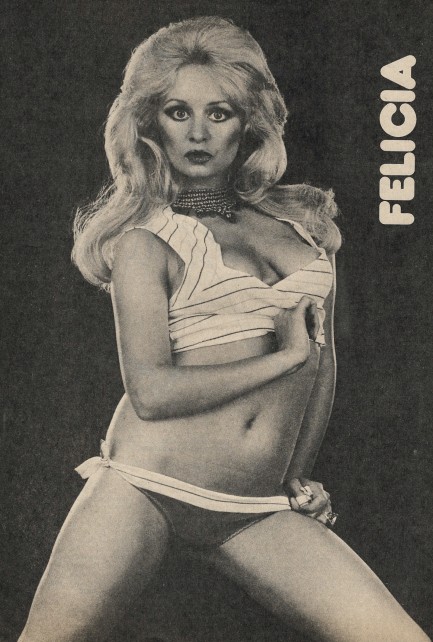 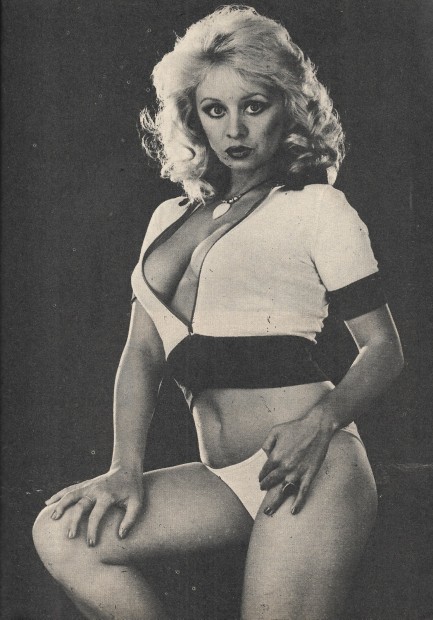 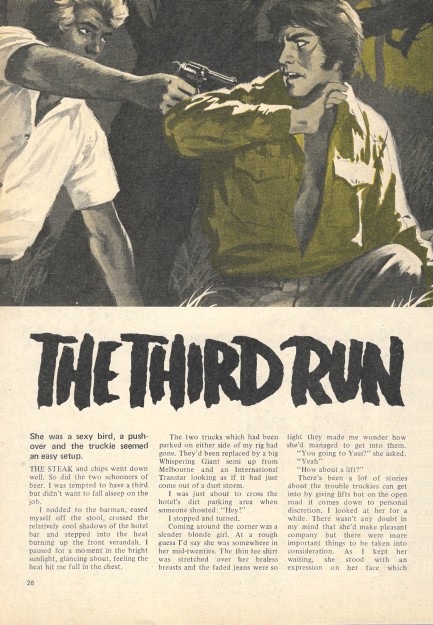 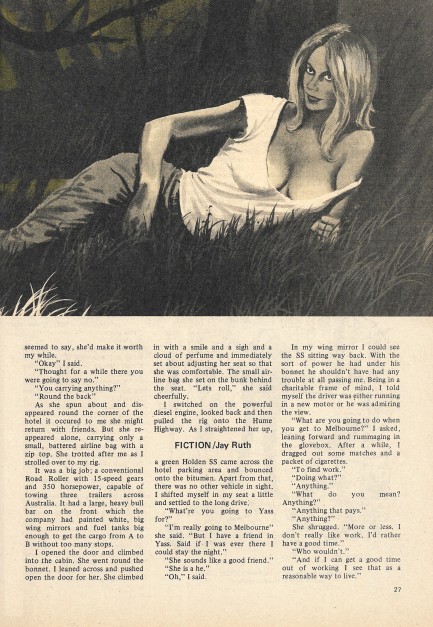 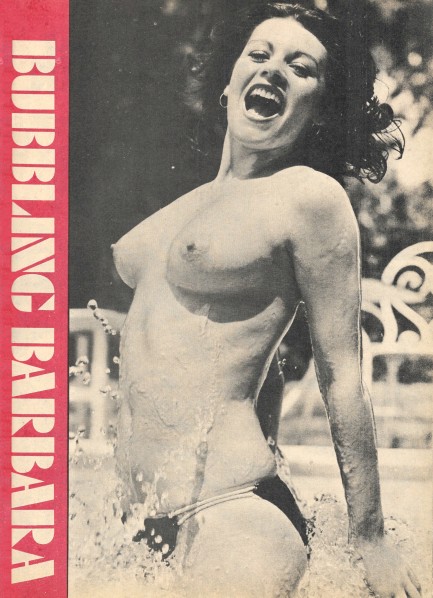 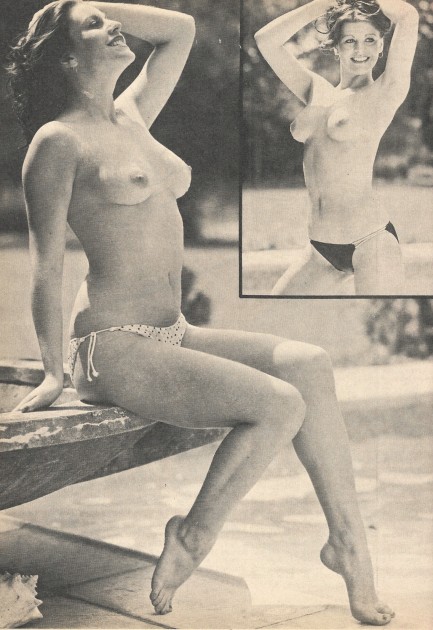 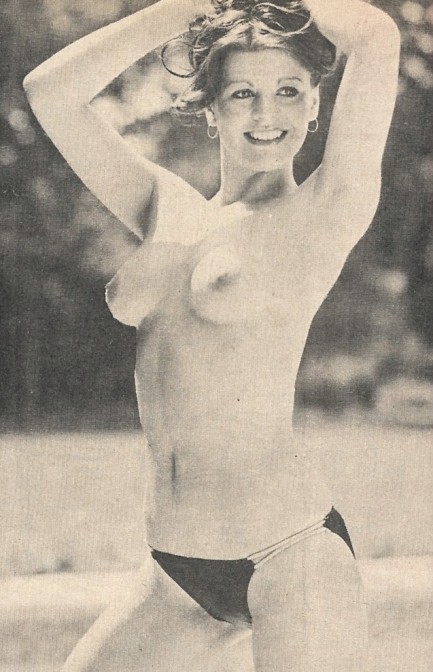 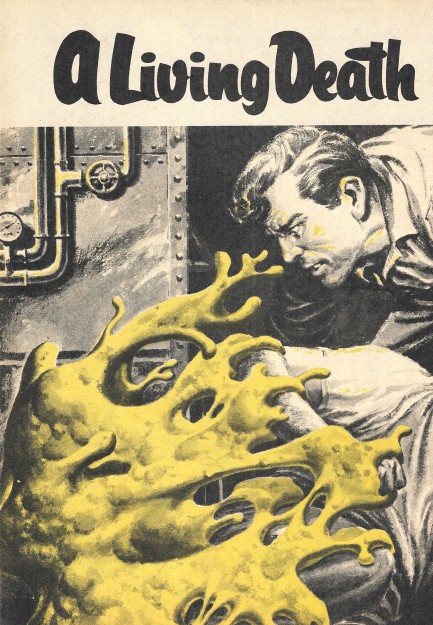 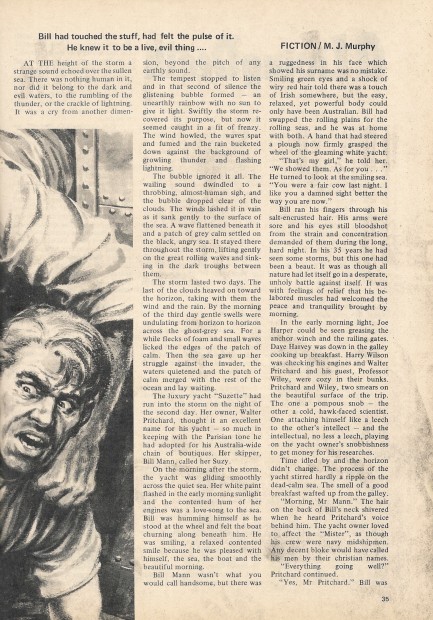 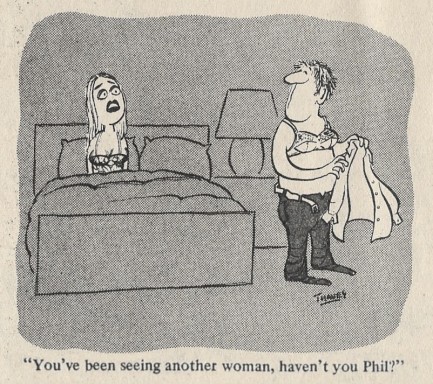  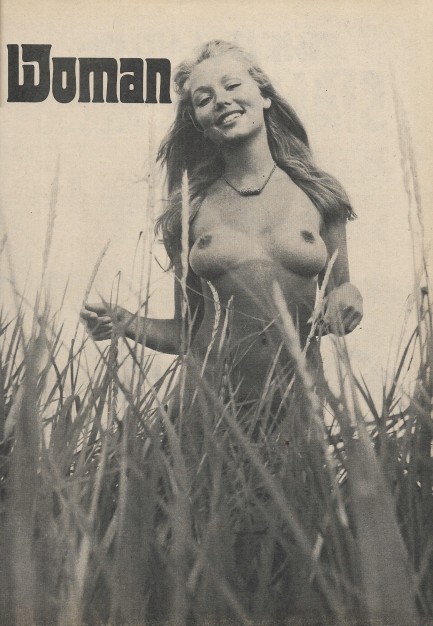 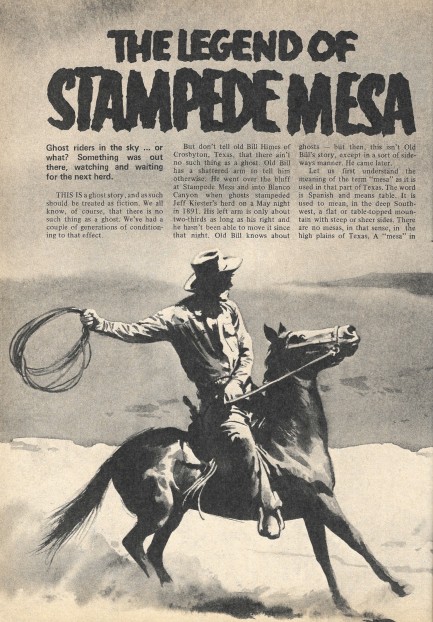 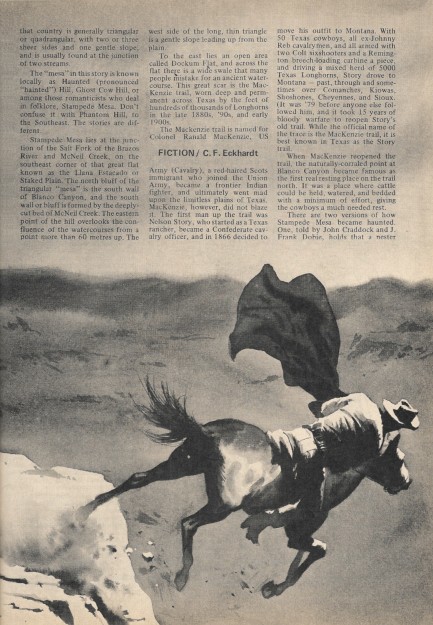 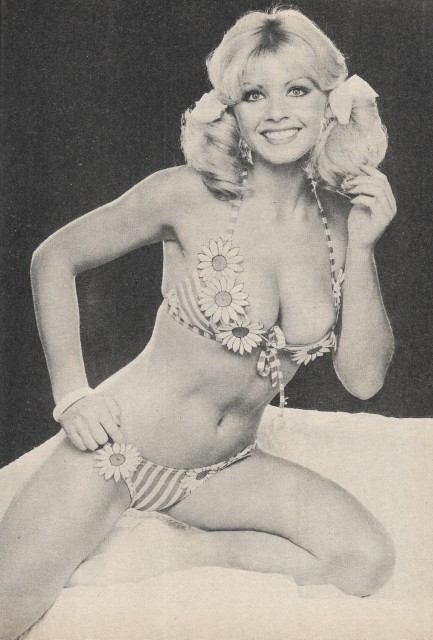 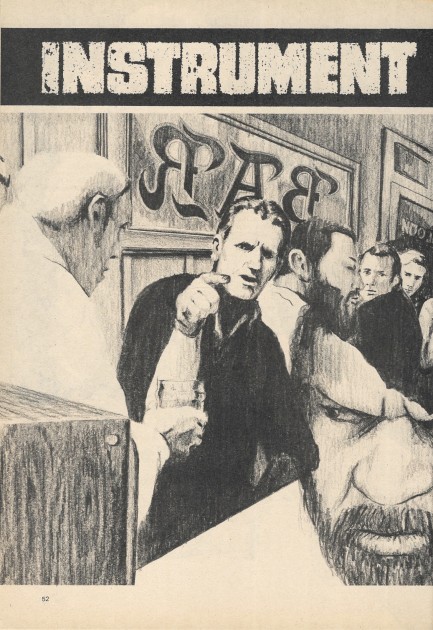 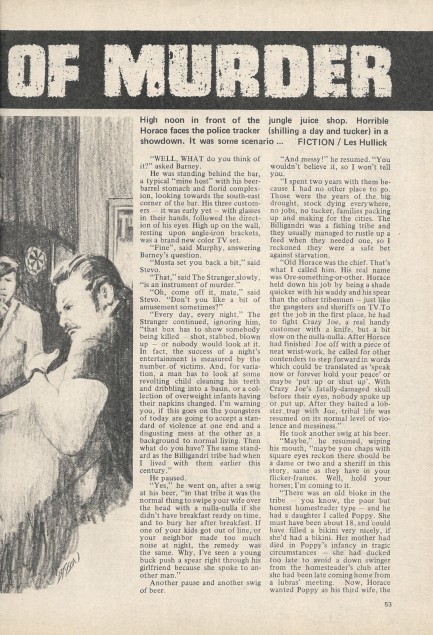  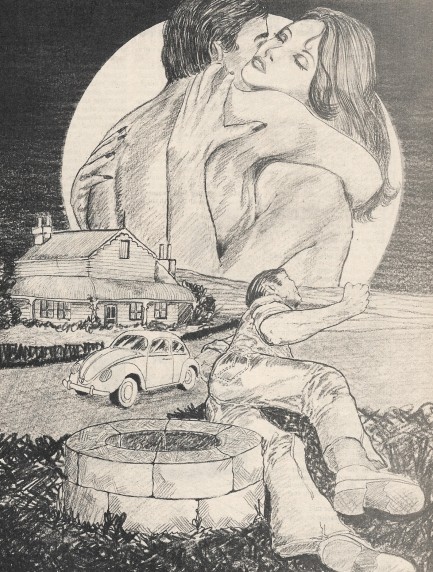    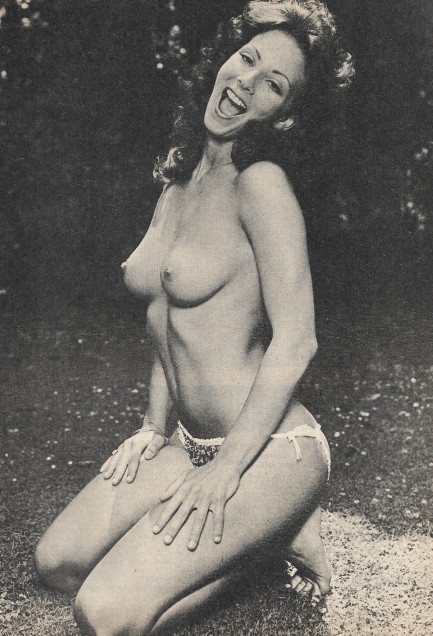 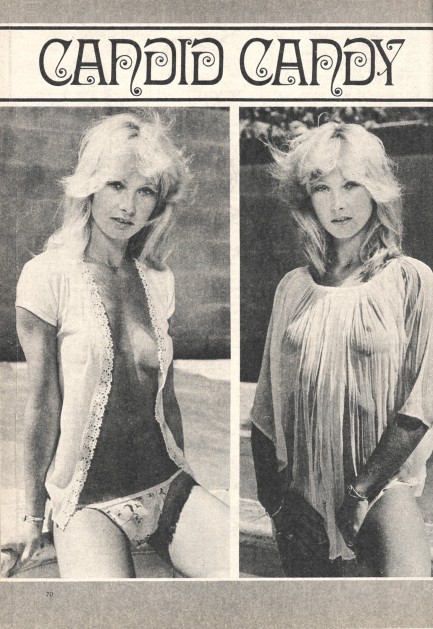 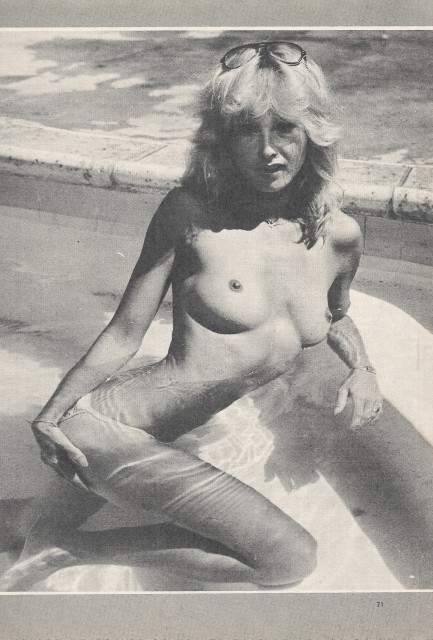 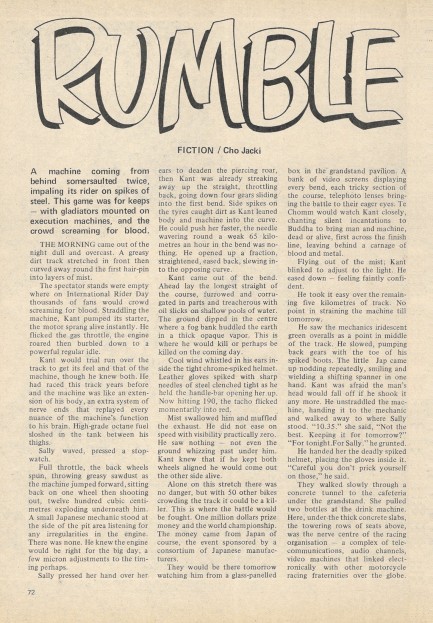 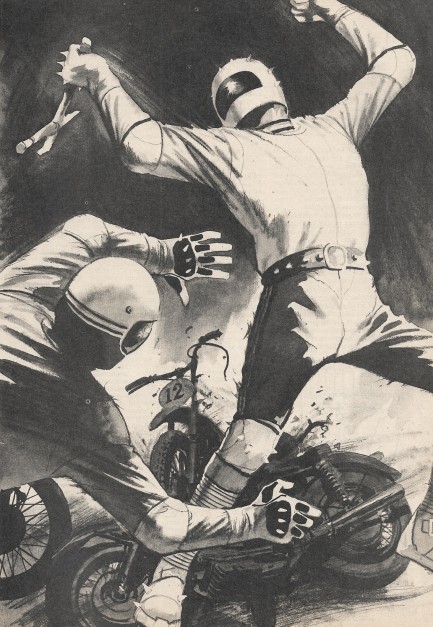  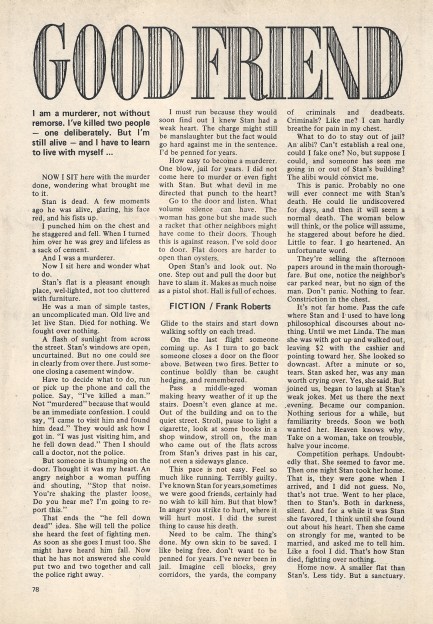 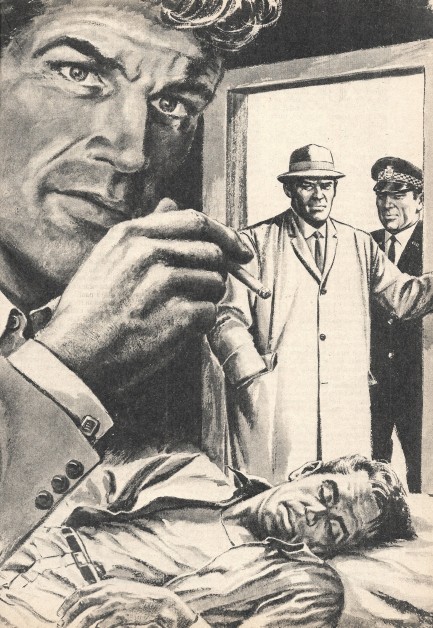 
 Get the right two people together and the heat can set the world on fire. 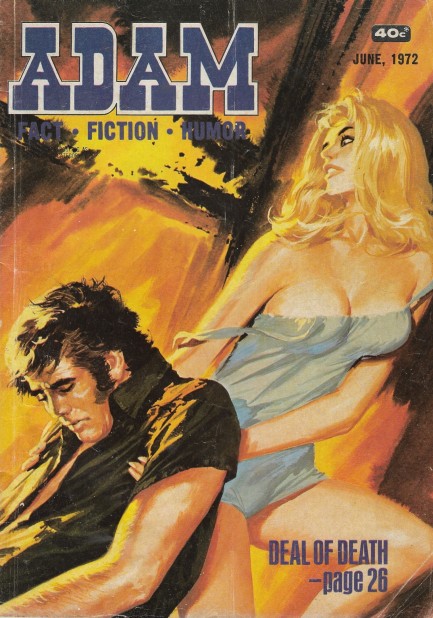  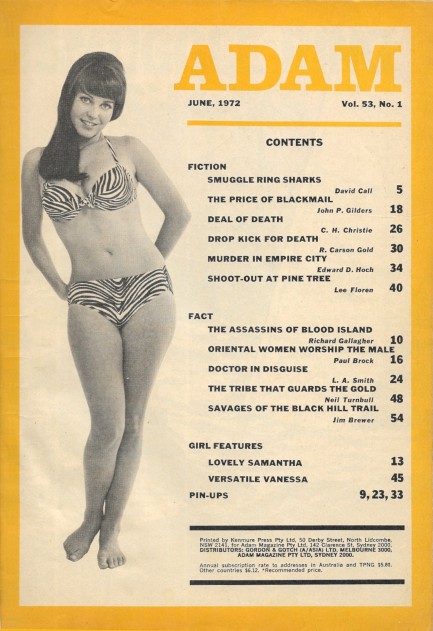 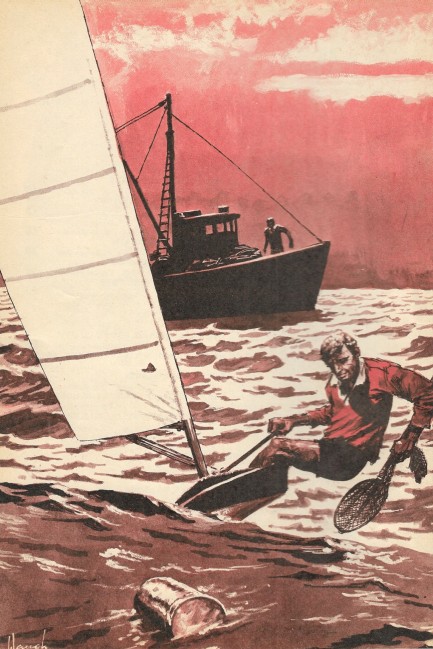 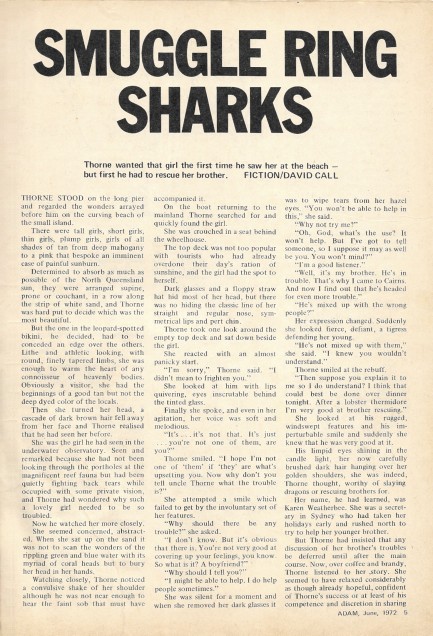 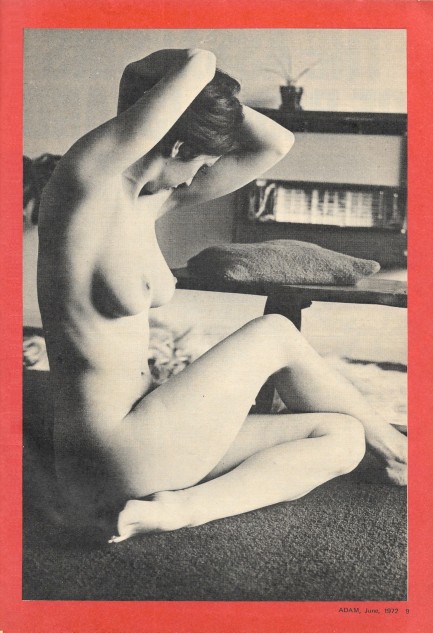 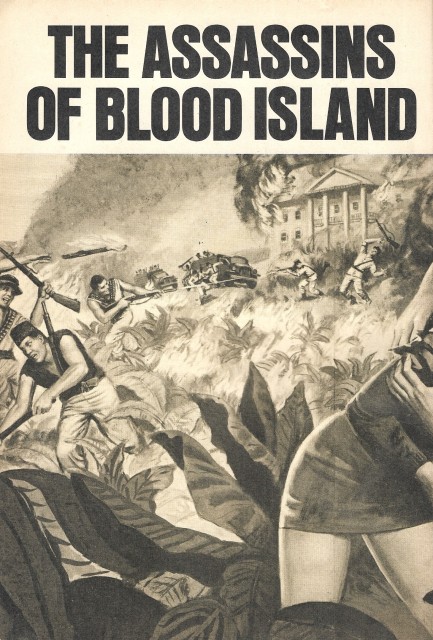   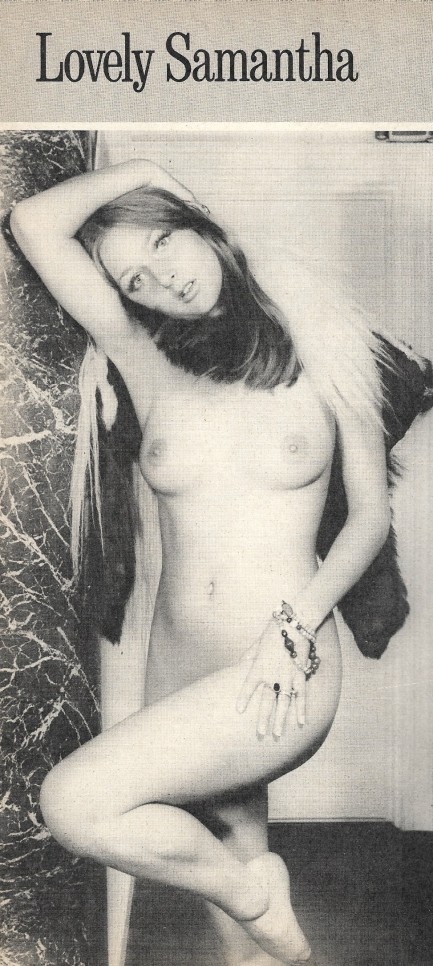 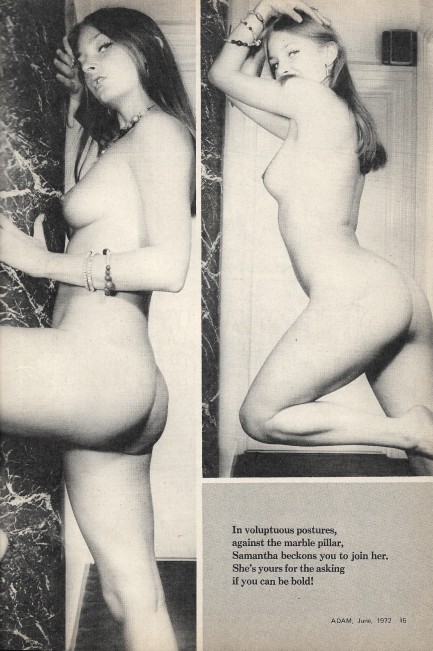  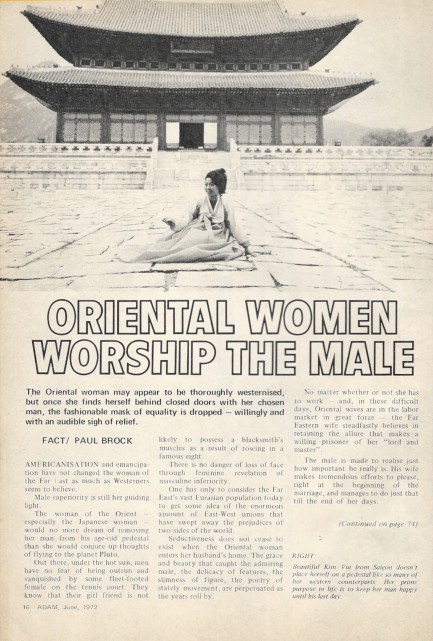 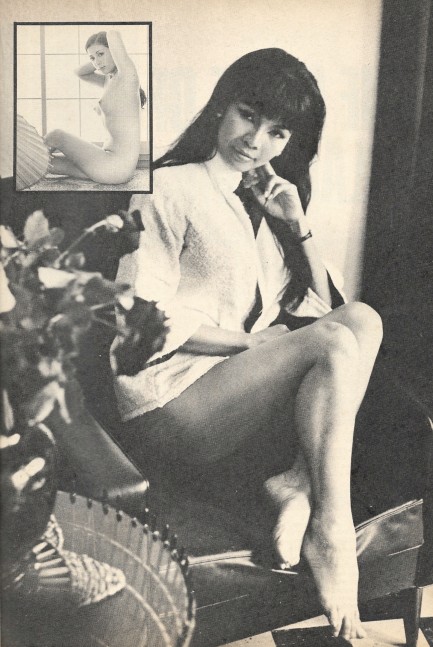 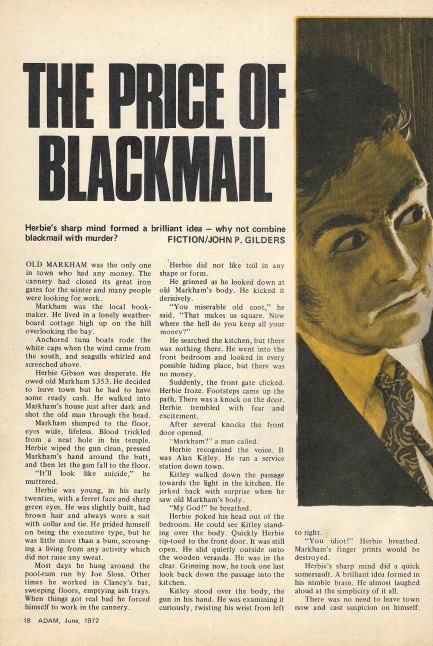 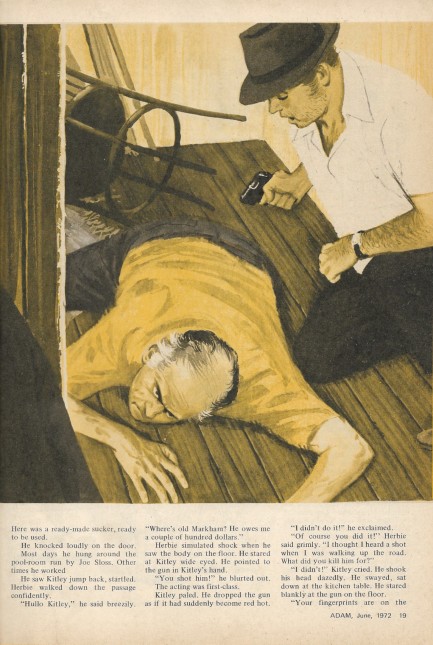 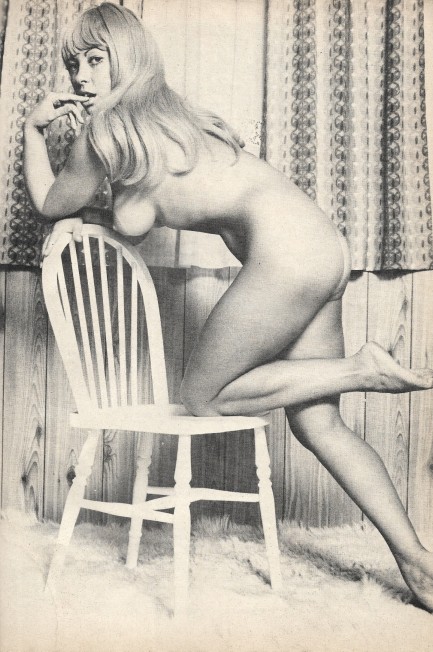 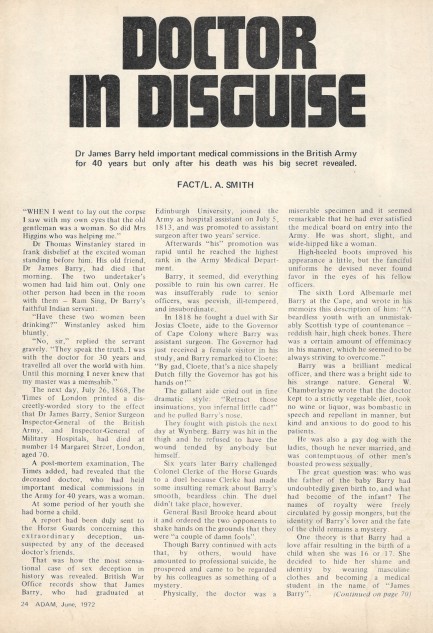 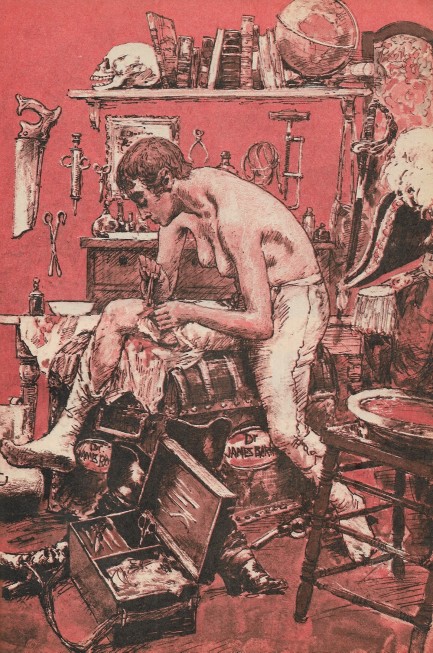 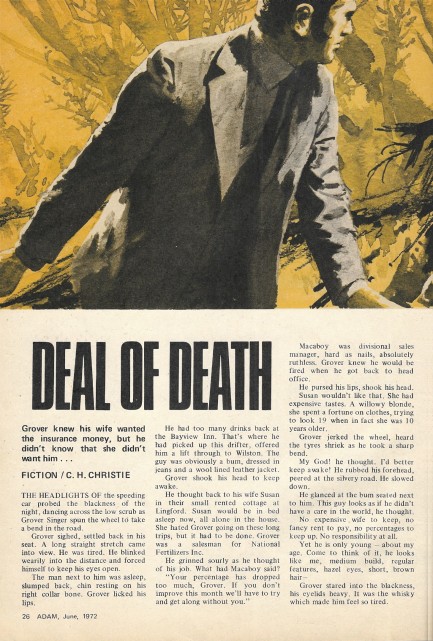 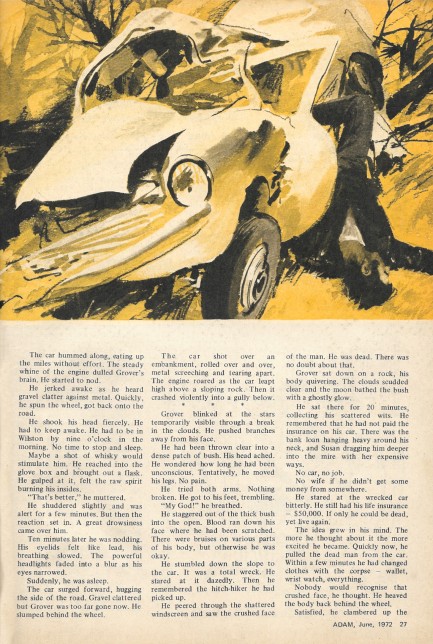  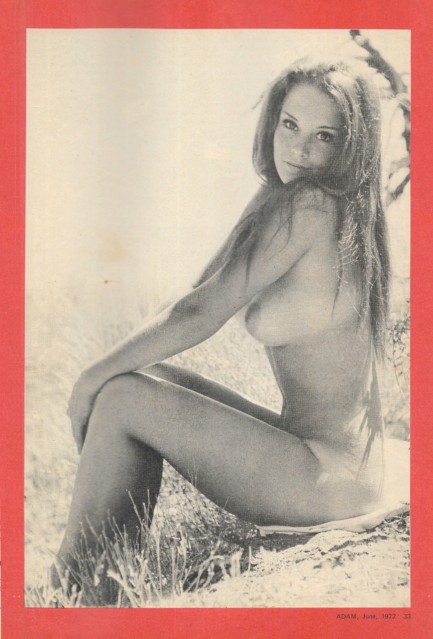 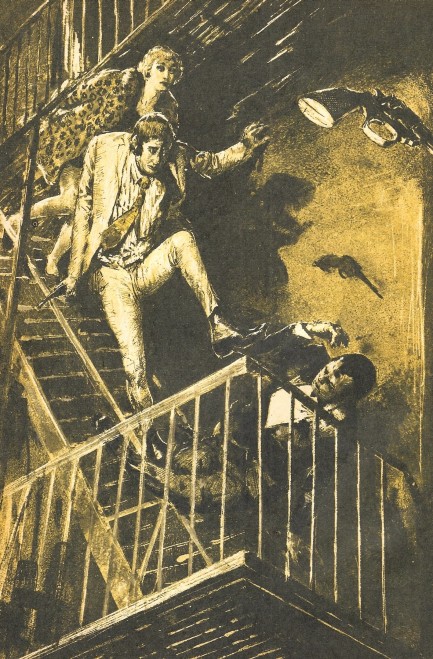  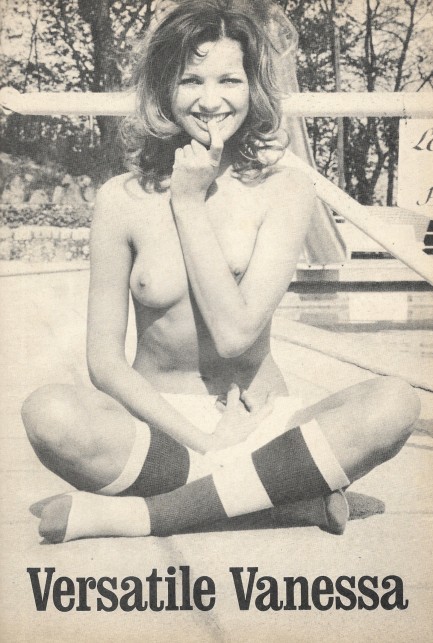 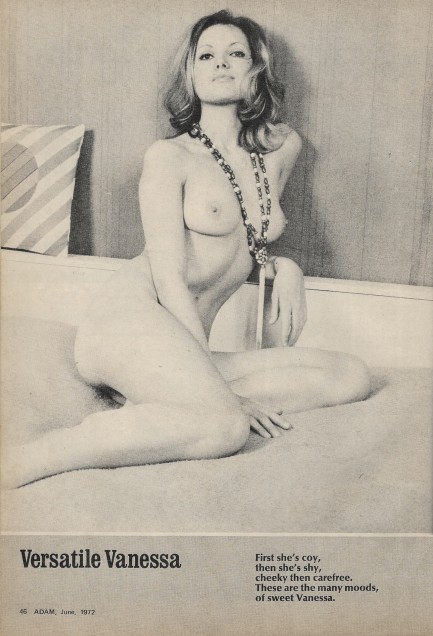  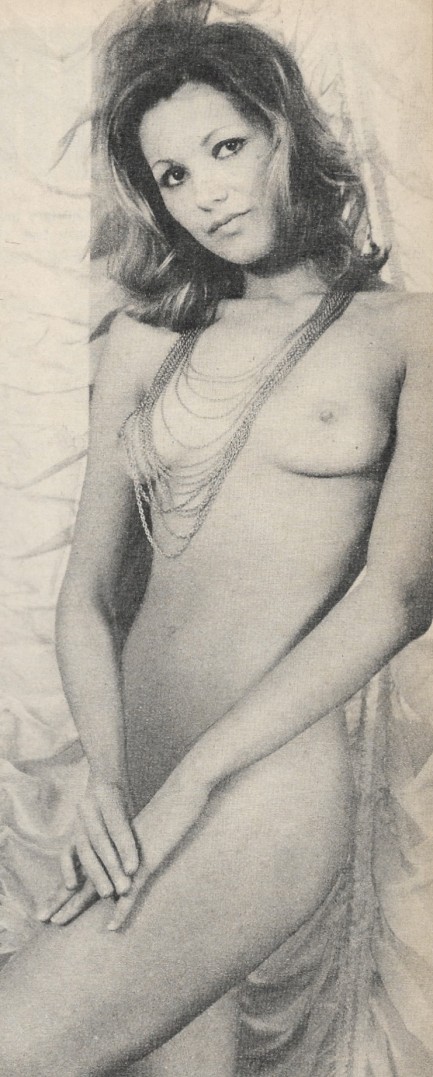 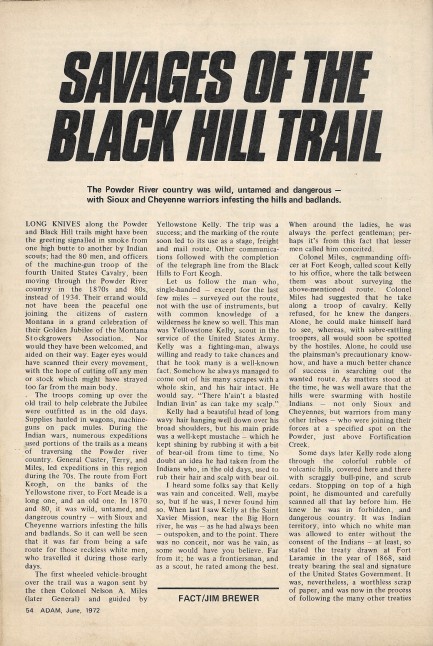 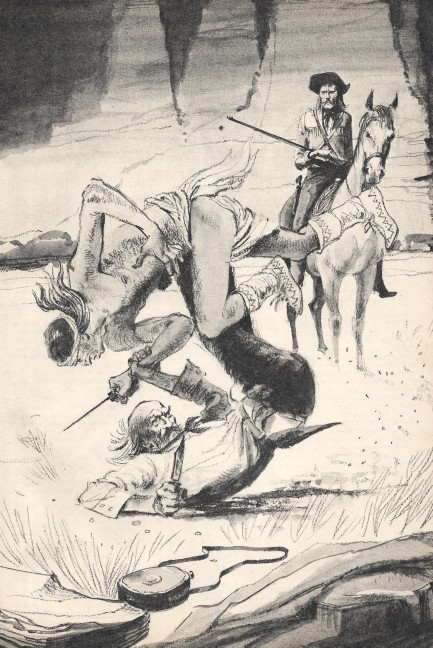 
Above: an issue of Adam magazine with another beautiful cover by Jack Waugh or Phil Belbin, illustrating C.H. Christie's story, “Deal of Death.” It's about a man named Grover Singer who's in debt and fakes his own death for $50,000 in insurance money (about $325,000 today). He does it by crashing his car with another man inside, but his wife knows right away the body isn't his. She doesn't tell the police, though, because she's been having an affair and recognizes the opportunity to run away with her lover and the cash. All that needs to happens is for someone to kill Grover for real. That's what lovers are for.
Also of note is the factual story “Doctor in Disguise.” The illustration give the disguise away. It's about a nineteenth century doctor named James Barry who practiced for forty years and upon death was revealed to be a woman. The long subterfuge involved everything from pretending to shave every morning in order to explain her smooth face to surviving a duel. In 2024, as women's rights remain under sustained attack, there's an opportunity built into this story for extensive commentary, but you know where we'd go, so pretend we went there and we'll let you get on with your Saturday. More from Adam soon.
 She can't help it—every time she goes out it's in a Blaze of glory. 
Above: a fun shot of strawberry eating burlesque dancer, nudist, actress, and all around public figure Blaze Starr, made by Bunny Yeager on the set of Blaze Starr Goes Nudist. It dates from 1962.
 You've garter see it to believe it. 
This sensual promo image stars Japanese actress Izumi Shima and was made for her roman porno film Wakazuma ga nureru toki, known in English by the evocative title When a Young Wife Gets Wet. The large text at the right side of the poster says, “When a woman smells mysterious.” So Shima is wet and mysterious. Sweet. We talked about the movie a couple of years ago, so if you want to know more feel to look here. But you can probably guess what it's all about.
The boys at Nikkatsu Film were true wordsmiths when they put their minds to it. In the smaller text they get lyrical: This year, Izumi Shima has become even bigger as she continues to star in movies. The charm wafts from her kimono, the sexiness spilling out from her see-through nightgown, and the mysterious adult charm that overflows from her black slip. Her limbs, like ripe fruits, are displayed on the screen without hesitation. Let me show you!
They had us at wafts.
 If Maya manifests in the forest and nobody saw her was she really there? 
In the Hindu religion Maya is the goddess of illusion, personifying the concept that the material world is not quite real, but Japanese actress Maya Hiromi is no illusion. She appears here in a photo published in 1977 in Heibon Punch Supplement 33, and in verifiable corporeal form she appeared in movies such as Onna kyôshi: Shônen-gari, aka Female Teacher: Boy Hunt, Kyoran no aegi, aka Morning Frenzy, and Kunoichi ninpo: Hyakka manji-garami, aka Female Ninja Magic: 100 Trampled Flowers. Like many pinku stars she racked up a bunch of credits all at once—seventeen in four years—then pretty much disappeared. But you'll see her here again.
 The paper that never published a truthful word. 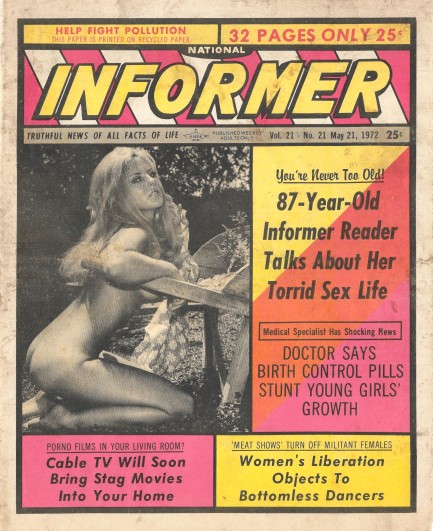
Speaking of gonzo newspapers, here's an issue of National Informer published today in 1972, with its “truthful news of all the facts of life.” That in itself is a higher level of satire than yesterday's competitor Rampage ever managed. This issue of Informer is all sex, with wonder pills, wonder drugs, hookers, and bedroom variations galore, including dominant women—and men whose egos can't handle it. There's a photo of a model captioned: “If you want your little to girl to grow up to be a big girl don't let her start taking birth control until seventeen.” We had to read it twice. Is that some sort of incest quip? There's nothing these tabloid editors wouldn't print.
Informer also once more welcomes resident seer Mark Travis. We remember when he took over for the (not so) Great Criswell. Of the two, we liked Criswell better. Plus he had a better handle. Travis predicts the rise of disposable clothing, a massive outpouring of U.S. budget on artificial lakes, and a sudden trend of home rifle ranges. These seers were early versions of modern day cable pundits—they could constantly be wrong and still keep their jobs. But once we accept these papers as satire, then it's clear that the predictions were supposed to be wrong. It's excellent work if you can get it. Twenty-plus scans below.
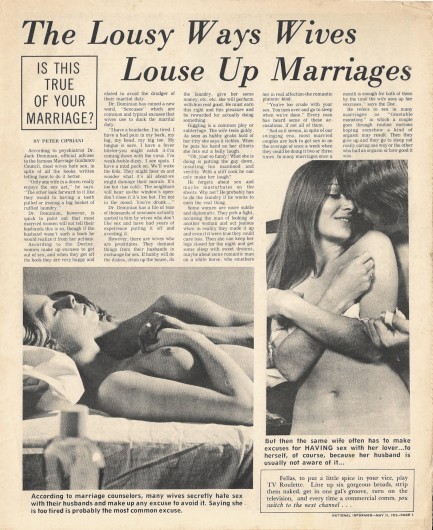   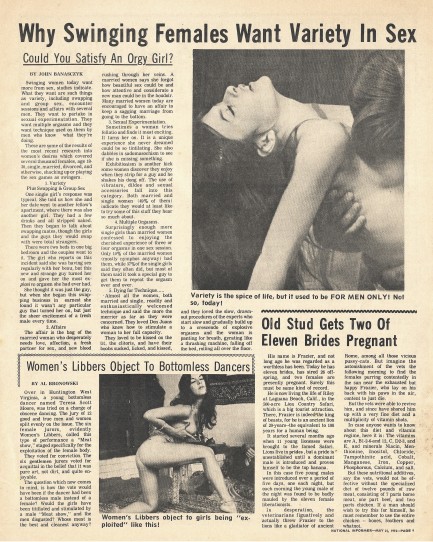 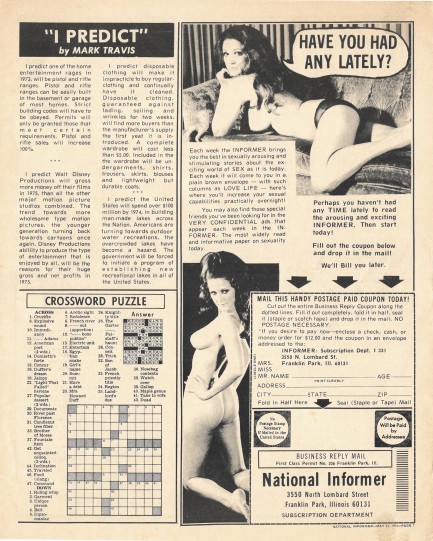 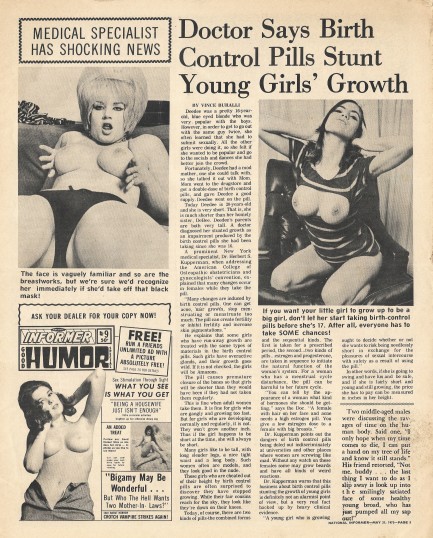   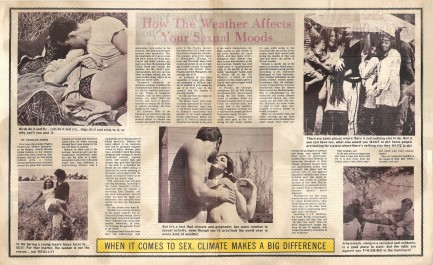 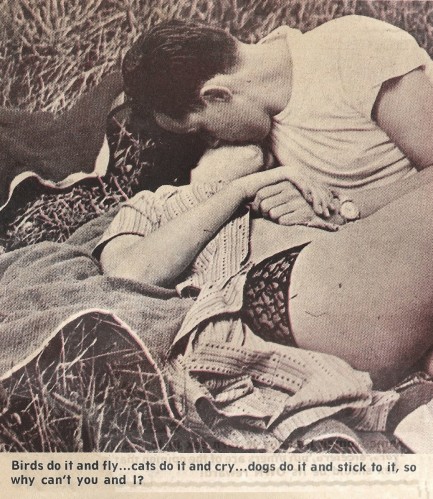 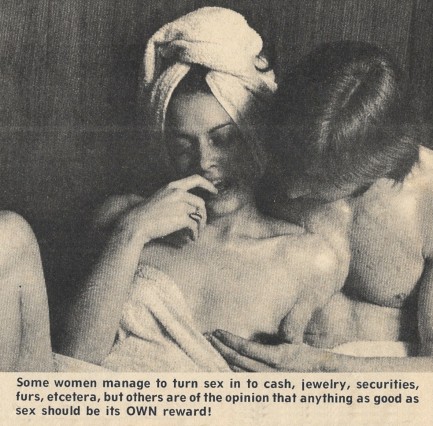 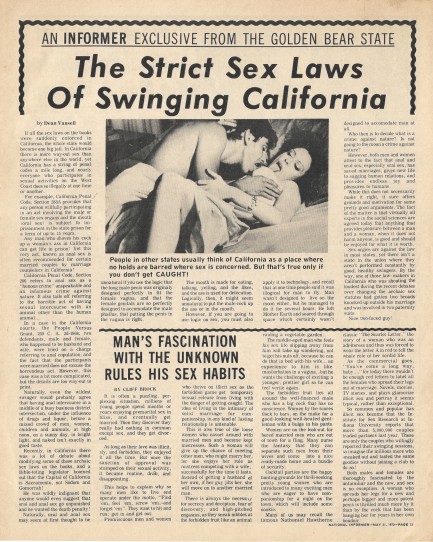 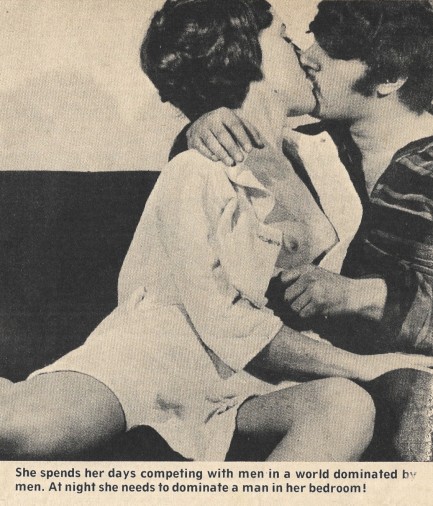 
 They slurp, you slurp, we all slurp in Rampage. 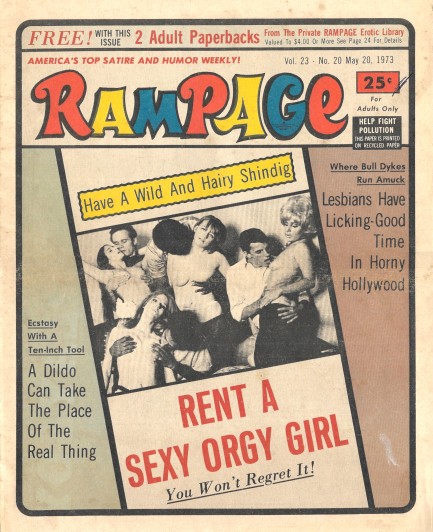
It's always fun to see which direction Rampage goes in each ridiculous centerspread, and in an issue published today in 1973 they highlight a mother and daughter who lick houseguests. This stuff is priceless. It's reported by “Karl Peabody,” who visits a Los Angeles businessman who runs his home "Burmese style," whatever that is, with a compliant wife and daughter required to entertain guests. Soon comes the licking, and we bet you can guess which part of this pseudonymous reporter gets licked. Rampage claims on its front cover that it's America's “top satire and humor weekly.” We're not so sure about the humor part of the formula, but the satire is certainly there.
We often wonder why people who bought Rampage didn't just go full porn and buy Playboy or whatever. But maybe Rampage and its ilk were displayed more openly at newsstands, and possibly as checkout line items in drugstores and the like, leading to impulse purchases. We figure the average buyer would read the paper twice—once out of curiosity, and again to make sure it was as dumb as it seemed the first time. With tens of millions of newsstand browsers every week, even a miniscule purchase rate would probably keep a tabloid afloat. Of course, we've bought dozens of these gonzo newspapers, so who are we to talk? Therefore we humbly submit for your perusal a selection of choice Rampage imagery.
     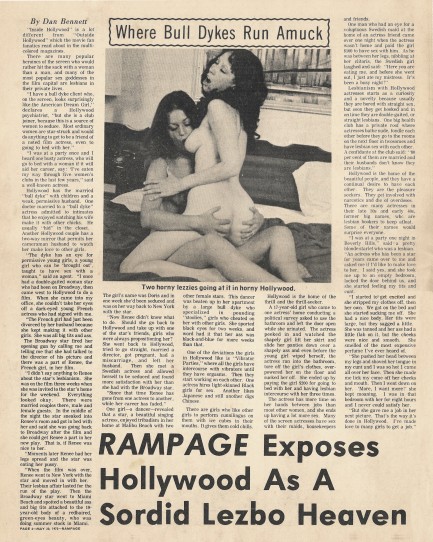 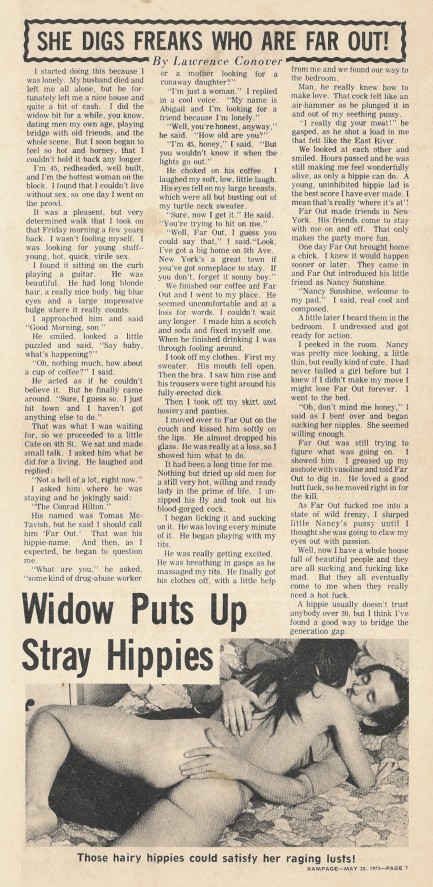  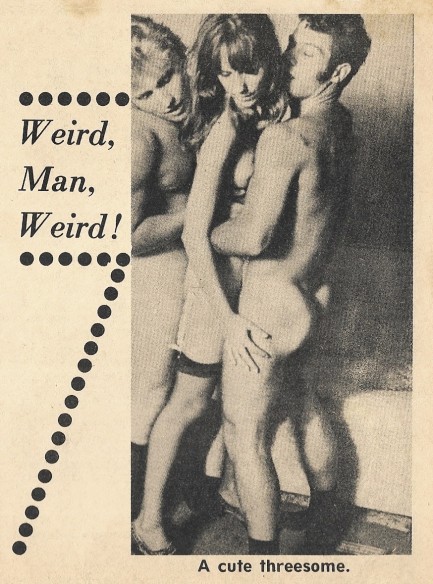      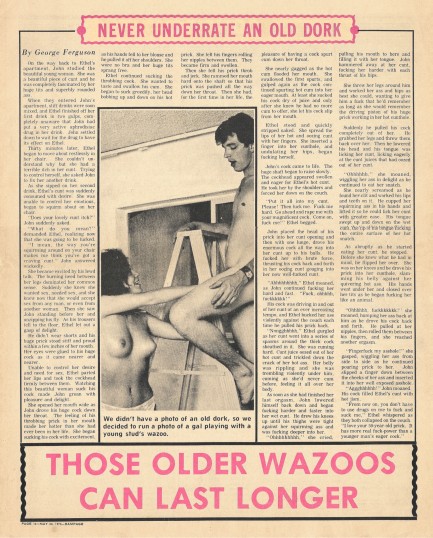  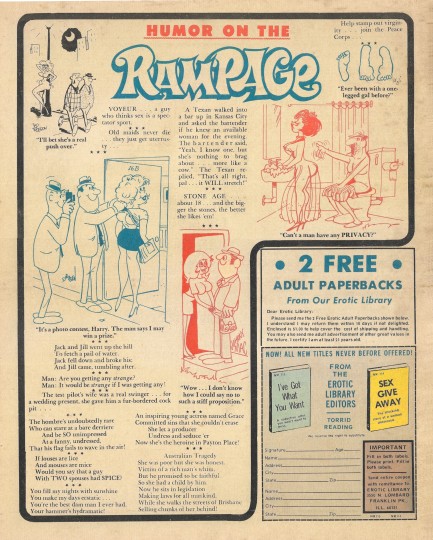

|
 |

The headlines that mattered yesteryear.
2003—Hope Dies
Film legend Bob Hope dies of pneumonia two months after celebrating his 100th birthday. 1945—Churchill Given the Sack
In spite of admiring Winston Churchill as a great wartime leader, Britons elect
Clement Attlee the nation's new prime minister in a sweeping victory for the Labour Party over the Conservatives. 1952—Evita Peron Dies
Eva Duarte de Peron, aka Evita, wife of the president of the Argentine Republic, dies from cancer at age 33. Evita had brought the working classes into a position of political power never witnessed before, but was hated by the nation's powerful military class. She is lain to rest in Milan, Italy in a secret grave under a nun's name, but is eventually returned to Argentina for reburial beside her husband in 1974. 1943—Mussolini Calls It Quits
Italian dictator Benito Mussolini steps down as head of the armed forces and the government. It soon becomes clear that Il Duce did not relinquish power voluntarily, but was forced to resign after former Fascist colleagues turned against him. He is later installed by Germany as leader of the Italian Social Republic in the north of the country, but is killed by partisans in 1945.
|

|
|

It's easy. We have an uploader that makes it a snap. Use it to submit your art, text, header, and subhead. Your post can be funny, serious, or anything in between, as long as it's vintage pulp. You'll get a byline and experience the fleeting pride of free authorship. We'll edit your post for typos, but the rest is up to you. Click here to give us your best shot.

|
|





